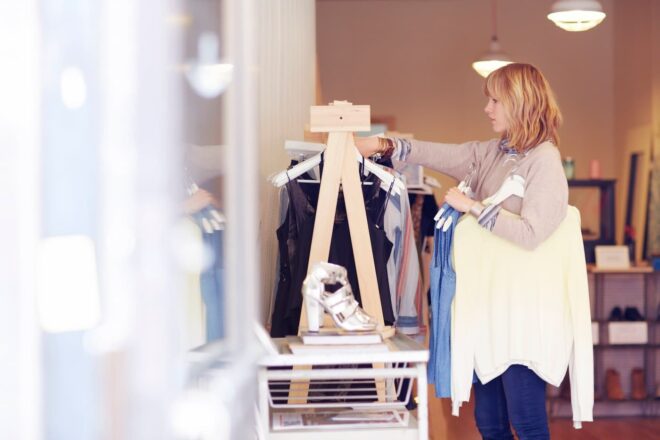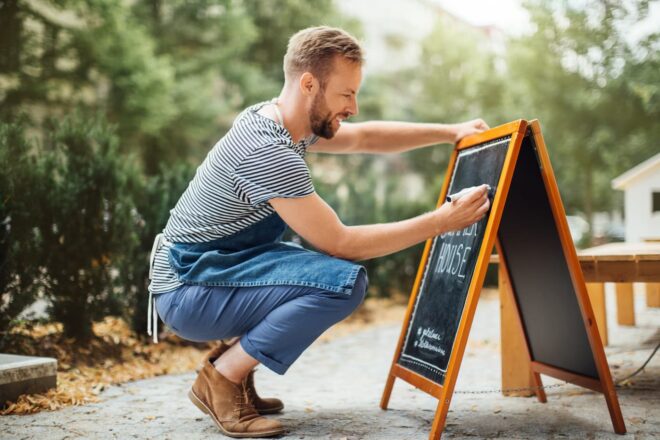Harnessing & measuring word-of-mouth marketing
Editorial Team
7 min read
Who do customers look to for advice on what to buy and where? Believe it or not, the bulk of them ask their friends and family. A whopping 92% of customers ask for recommendations from people they know before they buy. That makes word-of-mouth marketing one of the most effective strategies you can use to bring in new customers. Here are 3 types of campaigns to help get the word-of-mouth going as well as advice on how to track the effectiveness of your promotions.
Referral Bonuses
When you spend your time coming up with marketing campaigns, you don’t just want a little bang for your buck, you want a BOOM. Customers who are referred to you are four times more likely to buy. Even better, according to Wharton School of Business, they are 18% more likely to stay with you over time making their lifetime value 16% higher than customers who weren’t referred to you. Want to encourage your best customers to mention you to their friends? Create a refer-a-friend program. Using a customer referral reward app such as BuyFi make it easy. You simply collect your customer’s email address at the end of a purchase and the program will email the offer out for you. The customer refers you to friends, and if the friends buy, they all get rewards.
Rewards should reflect the value a new customer is to your business. For example, banks will often offer $50 for every friend you refer who keeps their money in the bank for more than 6 months. That’s because the profit the bank makes on that referral is significantly higher than $50. So consider how much value a referral really is to you when you determine the “reward” for your loyal customer.
Here are a few quick ideas:
- Refer a friend for a complimentary coffee and get a free croissant with your next order.
- Refer a friend and get more. For every friend who gives us a try you’ll get a free polish.
- Bring a friend for your next mani-pedi and you’ll both get a 10 minute shoulder massage.
- Psst. Bring a friend and you both get $5 off if you sign up for our rewards program.
- Refer a friend and you both get 20% off your next order. Limitations apply.
Try a few campaigns to see what really resonates with your best customers—they are the ones most likely to give a good referral to a friend.
Once your campaign is live, measure your return on investment by dividing your total profits by your total costs and multiplying by 100.
So, for example, let’s say you ran the $5 off campaign and earned $1,500 in your promotion period. Add up how many people redeemed your $5 off. (This isn’t the same number as those who received the offer—you only “lost” $5 if they redeemed it.) If 30 people redeemed your $5 off coupon, your cost for the campaign was $150. In this example, the Return on Investment (ROI) is $1,500 divided by 150 and multiplied by 100, or 1000%. That’s a pretty good return, especially when you consider those new customers are also likely to return and spend more money.
Want to know how valuable these customers are over time? Make sure you tag any new customers who came through a referral. Then you can run reports later on how much money they spent with you from year to year.
Loyalty Reward Programs
Whether you want to offer loyal customers a point system or a punch system, loyalty rewards are so effective they’re everywhere. They’re so prevalent, in fact, that many customers expect them. Many customers will go shopping with friends just to rack up extra points, which is what you want…new customers in the door who will in turn become loyal.
Which loyalty program is right for you? Let’s take a look at the two most common types:
- Point systems keep track of specific actions and gives customers points they can then exchange for products or services. You could, for example, offer 10 points if they sign up for your email, or 20 points if they follow you on social media. Reward them based on the amount they spend in the store, or if they make another purchase within a specific time period. Point systems can work well for businesses just starting out as it encourages repeat business right away.To make sure you earn back whatever you’re offering in this type of system, limit how many points they can earn for intangible things like following you on social media or liking your latest posts. Then make sure the customer spends enough with you to reach your breakeven point and be profitable even with the discount. While these are slightly more complicated to set up, they are often more profitable than punch systems.
- Punch systems are when the customer gets rewarded for the number of times they buy a specific product or service. “Get 10 oil changes and your 11th is free” is an example of a punch system and is a little simpler for the customer to track and understand. Customers can also be very determined to get that last punch, which is good for you.
To run a program like this, figure out your breakeven point for 11 of the item you’re rewarding and make sure you’re still making a profit. If there is a $10 lunch special that costs $5 to make, 11 lunch specials would cost $55 and would cost the customer $100. You can make the offer and still make a decent profit.
Both of these loyalty reward types are simple to set up with your Clover system. Simply determine your offer and use Clover Rewards to set it up. You can even send out automatic emails to customers to remind them how close they are to their reward. Clover rewards will also help you track how many people take advantage of these offers so you can track your ROI easier.
How Much Is Your Social Media Following Worth?
Everyone likes to be liked. But how much is that “like” or new follower really worth for you? How much did that Yelp review boost your profits?
Here are 5 ways to quantify your social media and review sites:
- Make an offer only through social media and see how many people cash it in.
- Make an announcement only through social media and measure the response. If, for example, you post on social media, “Ask about our friends and family program this week and get a surprise bonus,” you can measure how many people actually ask about the program. This can be a great way to make customers feel like they’re in-the-know about special offers. It’ll also give you a measure of how responsive your following is.
- Track whether engagement in your posts leads to foot traffic or a desired behavior. Maybe you post a stunning shot of your jalapeño poppers happy hour appetizer and get 100 views or shares. Do you then get a boost in people ordering that later in the week? If you spent all week posting about the new flavor of coffee you’re offering—did you get a boost in the number of people trying it?
- Track views and foot traffic. Every week tally up how many people looked at your posts or reviews. Was there a surge in traffic to your store that matches up in the same time period?
- Use special phone numbers or links that track activity. Don’t just put your main phone number on these sites. Set up call tracking so you know how many people call you after reading your social media posts. If you put special tracking links on every link in your feed, you’ll also be able to see whether they result in business.
If you’re not getting the kind of response you expected from your social media, it’s time to find out why. Try Clover Feedback to get first-hand feedback from your customers.
Want more ideas on how to increase foot traffic? Check out the Clover App Market for more marketing tools and ideas.
Related Posts
6 useful apps for boutique owners and small retail businesses
7 creative chalkboard sign ideas for your storefront
Popular Topics
Stay in touch
Sign up and learn more about Clover.
Thank you for your subscription!
More posts about starting a small business
eBook





